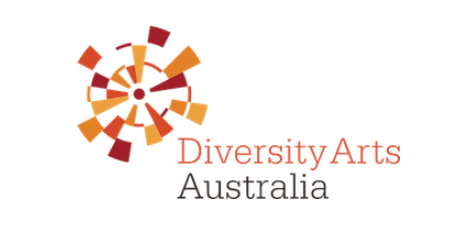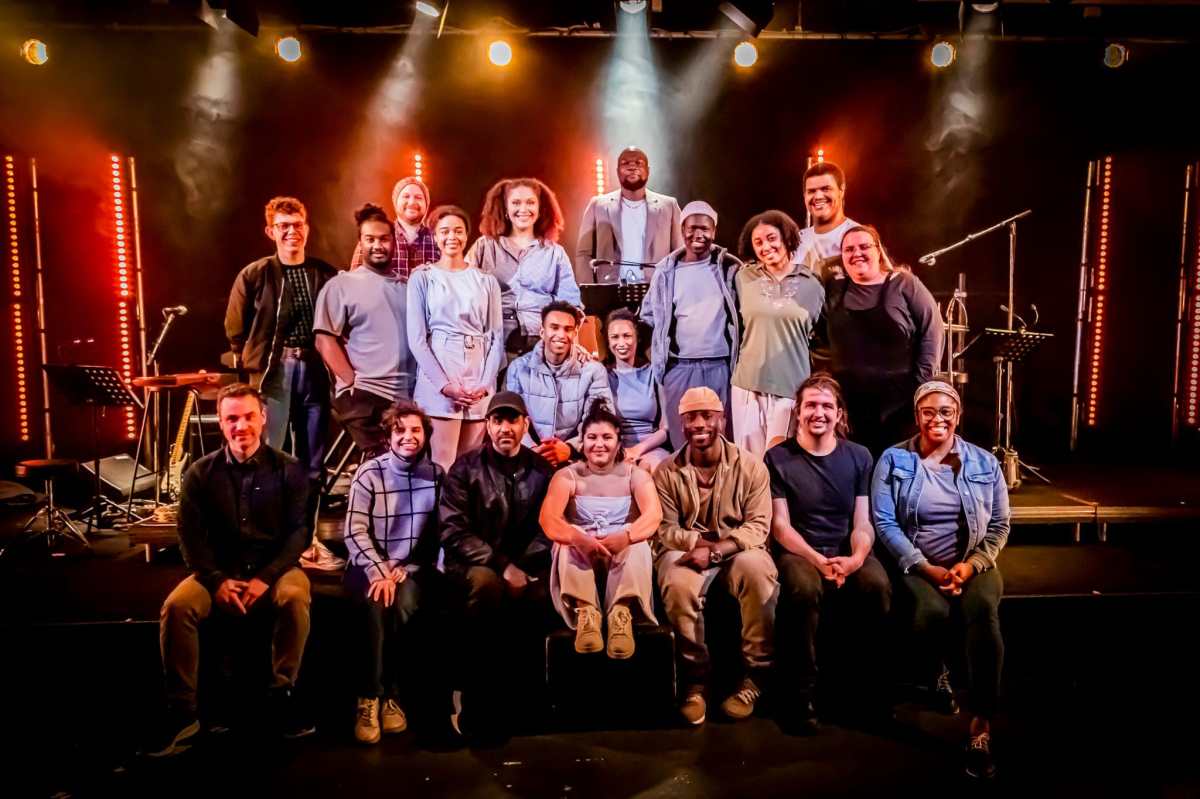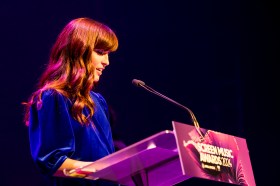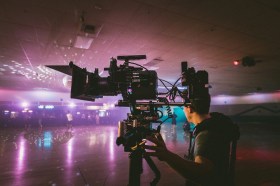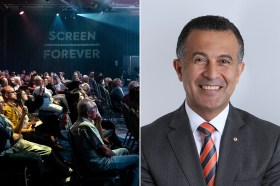Hello, lovely to meet you. I’m Cessalee: a Black woman, DEI (diversity, equity, and inclusion) consultant, director and performer, arts audience member, and advocate for a better industry – can we talk?
I’m compelled to share my perspective in light of the recent and not so recent commentary on racism and language in critique, both in Australia and around the globe. I know, I know – we’re not the US, we’re not the UK, but we are a country that values fairness. To uphold that value, we must do a better job of acknowledging where we are while proactively finding a solution. We must recognise global trends, engage in tough conversations and consciously shift our thoughts, narratives and behaviours.
Our sector is calling out for more inclusion, representation, diversity on and off stage and in our audiences? Many of us are dedicating our careers and livelihoods to this goal, so this is where you come in. There is a powerful privilege in being the person to speak directly to our patrons in a way we cannot, to have influence over the conversation, to be the little voice in the audience’s ear as they step into the theatre or onto the ticket buying website. With any power comes great responsibility, so let’s dive in.
In case you wanna jump to your favourite part, here’s what I’m saying:
- What I think we need to think about (offerings from my perspective as a person who identifies as a Black woman, a director and performer, an arts audience member, and a DEI consultant and advocate. )
- What I’m thinking we might do (the part I need your help with, these suggested actions for all of us)
- What I hope is our way forward (the outcomes I’d love to see)
So here, let’s dive in.
First, let’s talk about BIAS
Dr. Ruth de Souza describes the first step in cultural safety as a critical analysis of self. I would paraphrase that as a check-in of potential bias for yourself, your organisation, subscribers, and followers. Addressing the impact our biases make on our perspective, work, and reception is one of the most inclusive practices we can do. I don’t think biases are bad or wrong. On the contrary, they are a neurological response to the brain’s natural, normal process of creating in-and-out groups.
For example, when I watch a game show, I’m more likely to cheer for the person I suspect I have the most in common with, perhaps based on race, where they’re from, or what colour their shirt is. This is an inconsequential response based on a normal function of our brains, but in this example my cheering has no impact on the outcomes.
As reviewers, if you’re not aware of who you are and aren’t ‘cheering for’, it can unconsciously come out in the way you see, define and describe the work.
Biases block our ability to believe that certain characters are capable of having life experiences that buck our assumptions of them. Plus-sized people can be loved. People with disability can be professionals. Racialised people can tell stories that tap into their culture and also the ones that don’t. It’s impossible to completely rid oneself of biased thinking. However, inwardly acknowledging your own biases can lead to more enlightened, responsible writing about topics such as body size, interracial relationships, quality of vocal sound, gender identity and ability.
That leads me to the ol’ TALENT vs. TYPE conversation
Recently, a heap of reviewers and critics have been called out for reviewing the person, not the performance. Can I be honest with you? Those sorts of reviews tell me more about you and your biases than they does about the person or performance.
If your review only mentions the ethnicity of the non-white performers, or needs to include comments like I kept worrying that the stage would collapse under them or the costumes were not as flattering on her body, you’re talking about what you outwardly see about the person, not about the quality of their performance.
It is possible to give critique on talent without leaning into type as a scapegoat for negative criticism. It’s the difference between ‘I didn’t like her acting choices’ and ‘I didn’t believe a (fill in your own blank) person would really be like that.’ Rarely does the physical attribute of an actor inhibit their performance, and for the vast majority of work, they didn’t cast themselves.
If you can’t ‘see’ them in the role, that’s a good indicator you are judging by type, not talent.
This goes for both individuals and whole productions. Comparing the value of a play about a specific Asian community to another play made years earlier about people from an entirely other Asian country tells me you’re not talking about the quality, talent or skill level of these productions, you’re talking about the category you’ve created called ‘plays about Asian things I don’t understand’. That’s not fair to the productions or the communities they celebrate.
The talent vs. type discussion frequently pertains to race, but also includes body size, disability and gender. The beautiful thing about moving to inclusive casting is that we can believe that an actor has agency to bring as much of their humanity into their performance as they’d like to, and the discussion about their performance should not be muddied with unnecessary commentary about their body.
Ideally, they are critiqued on their acting talent and technique, and not by the critics’ limited assumptions about their immutable characteristics or identifiers.
But if you need to talk about our IDENTITY
Please, please refrain from publishing assumptions about an actor’s identity. Please also keep in mind, just because the character identifies in one way, doesn’t mean the actor does too. And if you’ve decided that your review MUST use someone’s identity as a descriptor (it rarely does, see above), and you’re speaking about the actor, then make sure you’re speaking truth to their identity and not your opinion of what’s important about their identity.
I’ll use myself as an example – in two recent articles I’ve been described as a person who ‘grew up Black in America’. One worked, one did not — here’s why:
- When describing my work in Passing Strange, a play with an all-Black cast about a Black American man’s journey in life, the reviewer wrote, ‘Cessalee Stovall is the show’s associate director. As someone who grew up Black in the US, she’s able to provide context and personal experience to the show’s cast.’
This makes sense as my childhood and where I was raised are specifically pertinent to my ability to direct a show about a similar upbringing.
- In an article discussing me and two of my castmates who are all playing the same character at different times in her life, we were described as an Indigenous actor, an Indian-Australian actor, and ‘Cessalee Stovall, who grew up black [sic] in the US.’
So you’re talking about one person’s culture, one person’s place of birth, and what race I used to be?
Where do we start? What I believe the author was attempting to say was, ‘The three performers each bring a distinct cultural, racial and ethnic lived experience to the portrayal of the character’. But instead, they conflated culture, nationality and race into one lucky-dip bag to highlight the singular part of our identity that, in their opinion, most shaped who we are and how we perform our role.
Adding salt to the wound, these descriptors are not the way any of us speak about our identity. Not cool. (For the record, I identify as Black, always with a capital B – see more below.) This is not just true for ethnicity, nationality and race. Unless it is the point of your story, including descriptors of an actor’s gender, disability, sexuality and other protected classes very rarely adds anything to the story.
In the same way you wouldn’t speak about someone you respect using a name or pronoun that was not theirs, we should offer artists the same respect when speaking about something so personal as their identity. We should speak and write in a way that aligns with how people prefer to be referenced and not assume we have permission to comment on that identity without consent.
Putting those together, can we then revisit the notion of GOOD THEATRE
‘Good’ is not a universal term. ‘Theatre’ isn’t even as clear-cut as it was ten years ago. Reviewers and critics do an amazing job of breaking down the things an average theatre goer might not be able to articulate – pointing out the nuance in the director or actors impact, highlighting the holes in the plot lines, breaking down big themes, identifying subtle nods to other work.
I love a good review, and honestly, many subsequent productions, revivals or regional and touring productions have been made better because of the reviews. You are skilled at what you do and years of experience have afforded you a finely tuned palate for good work.
And now, in 2022 things are moving fast. The fulcrum of good vs bad is individual and dynamic. To be quite frank, for many, many years, theatre has been made with you, or people like most of you, in mind – the ‘Arts’ lover who is literate in the classical theatre canon, the nuance of stagecraft, consideration of themes, use of sound and lighting, narrative frames and all the traditional makings of good theatre.
Now that the art form is becoming more broad, both in style and intended audience, the metrics by which we judge ‘good and bad’ should expand as well. Consideration for community engagement, representation, authenticity in storytelling, impact for community sense of worth, self-determination and truth telling must be factors in the ‘good art/ bad art’ question. And, in my opinion, we are not all equally equipped to discern that.
Time for another analogy. Imagine all my life I have eaten soul food – delicious, deep south, five hours in the kitchen kind of soul food. Then, let’s say I am invited to review a raw vegan restaurant in the gentrified part of town. To compare this restaurant to what I’ve always known and eaten wouldn’t be fair.
And the raw food restaurant’s viability in its community is based on its ability to meet that community’s need, not my needs. I’m in the audience, but I’m not the audience.
Do you see the difference?
This might not be the best spot for me and my meat-eating followers, but wouldn’t it make sense to at least invite a vegan to eat with me to help me understand the complexity of the foods that I might miss in the absence of bacon grease and full cream milk. Again – I’m not asking you not to review the shows, I’m asking for a bit of research and community and cultural awareness before deciding you’ll judge Karen’s Raw Bar and Sylvia’s in Harlem on the same scale.
Speaking of scale, the 5-star scale that has been the primary metric to measure how boppable the songs are or how strongly a monologue is delivered may not be robust enough to measure the impact of a community represented on stage for the first time, or the reception of a traditional song delivered in a language you don’t speak, or a story that is deeply ingrained in the experience of a culture that is not explicitly spelled out to give you access. Being foreign, new or not directed at you does not have to be equated with not being good.
So, what next? I should reiterate that I’m an advocate for the advancement of our sector, I’m a champion for safety, I’m a realist with a dream of a more inclusive and equitable sector, but I’m not a journalist or a critic. I’m not here to tell you what to do. Instead, I seek a dialogue to gather our insights to elevate us all.
Here are some things I think might be solutions – could we maybe:
Critics
- Take a few of the Harvard implicit bias tests. They’re a great free tool to bring awareness to biases.
- Keep those biases in mind the next time the curtain goes up.
- Avoid mentioning diverse immutable characteristics of an actor without a clear alignment to your point.
- If you need to mention identity, make sure it’s about the character or productions, not your perspective of that identity.
- Ask yourself, ‘Does mentioning this change the story for everyone, or did it just change it for me?’
- Take a moment to reflect, am I the audience or am I in the audience? When you’re the latter, consider the impact to the community and responsibility of your voice in the critical discourse of something that was not made with you in mind.
- If you are not the audience, can you find someone who is? Speak to folks after the show, invite someone from the community to join you. Inform your analysis, as best as you can, with cultural awareness and sensitivity.
- Don’t be afraid to say ‘I’m sorry’.
Editors / News Outlets
- Increase representation in your teams in a paid capacity and meaningful, non tokenistic / opportunistic way. People of colour can write about more than shows with or about people of colour.
- Longer lead times before the show to allow reviewers to dig a bit deeper into the context and understand the impact on community.
- Hold responsibility for harm, do not throw reviewers under the bus.
- Engage with people and organisations who are working to bring a multicultural perspective into journalism, like SAARI Collective.
- Carefully edit to identify language that may be unintentionally harmful or problematic when used for specific groups.
Producers (with the help of publicists and agents)
- Empower reviewers with information. Do you have non-binary folks in your company, do you have First Nations folks, do you have people with visible disability that may be commented on? Send an identity pack including pronouns, mob, and identifiers to use.
- Publicly stand with artists after bad or insensitive reviews.
- Have a plan of response ready. That might include asking for a retraction or apology, removing the reviewer or publication from your Opening Night lists, sharing a statement of solidarity, or not fanning the flames. Empower the artist to determine their participation and voice in the response.
- Stop inviting problematic people to review your shows. Full stop.
Audiences and Industry
- Let’s call in the folks who have written harmful reviews and hold them accountable.
- Recognise that everyone is not going to do it right, but that doesn’t require automatic cancellation – to build a culture of accountability we much also make room for acceptance of apology*.
*as long as they are impact-acknowledging, well-meaning, action shifting, authentically offered apologies.
Final thoughts
I want to be clear, this is not one of those ‘you and your people are doing everything wrong’ kind of open letters. This is a ‘we ALL want better, let’s talk about how we do that’ kind of letter. I do not have all of the answers, but here are the things I think are part of the way forward:
- We must uplift the expectation of fair and considered reviews. Tying fairness and equity to outcomes, not process, means we may not measure all theatre on the same metric.
- We want you to have and share your opinions. Keep holding us accountable for clarity, honest, and truth in our storytelling. Keep being critical, that’s your job and most of you are doing a damn fine job at it.
- We ask you to have awareness, nuance, cultural consideration when you share your critique.
- We would appreciate your grace to see people, both actors and characters, as capable of the full human experience, unlimited by stereotype, bias or perception.
- We implore you to join us in our commitments to make theatre for everyone – not just the same people it’s always been for.
- We hope you recognise your role in educating our audiences. If they can believe that Oberon is invisible, if they can accept that an aside can be heard by an auditorium of 500, but not by the character standing one metre away, I know you can help us share the richness, the depth and the fullness of the characters brought to life by those they’d least expect.
- We need you to expand the voices in critical review. We’re not asking you to leave the field, but help build it bigger. In the words of the titular character in Morgan Lloyd Malcom’s Emilia: ‘We do not ask them to step aside and go without, we merely ask them to let us join. Surely there is enough to go around.’
We can do this – will you join us?
And one last thing, since you’ve come this far: I am frequently asked ‘what’s the best term to use’ when talking about groups of people, some of whom I don’t even belong to. Answer: ASK THEM!
For instance, I self-describe as Black when I’m in Australia but Black or African American (no hyphen) in the US. Here, I don’t often use the term Black American, because I’m an Australian citizen and it’s confusing and makes people see me as not Australian.
I don’t use the term African in my descriptor of myself in this country because, though I am African diasporic, I am not culturally connected to the African continent in the way many other people here are, and while I recognise the similarities in our lived experience, I also feel that it co-opts the African experience which I do not have.
I don’t use a hyphen in the US because I think it adds a conditionality to my American-ness and I’m more culturally American than I am African, though more ethnically African than Native American. But I don’t expect you to know that, or for other people who have the same background as I do to define themselves the same way. So just ask us 🙂
Cessalee Stovall
Founder and Director, Stage A Change
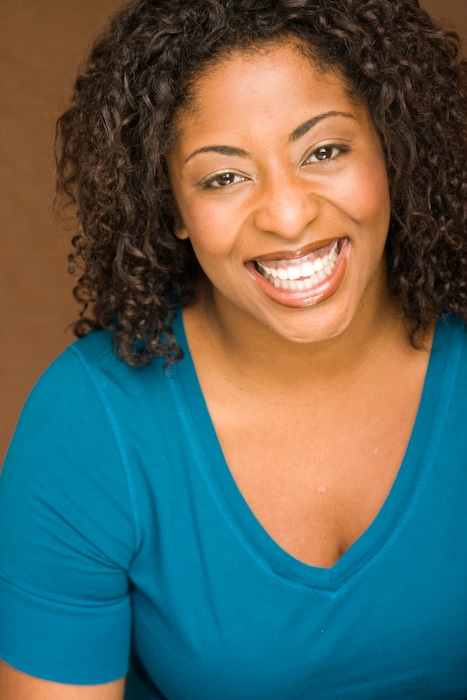
Cessalee Stovall is an artist, educator, and advocate who connects her theatre and performance practice, expertise as an educator, lived experience as a Black artist, and passion for engagement through the arts to deliver programming that serves artists and our industry on a global scale.
With a degree in theatre from Florida State University, certificates in Diversity and Inclusion from Purdue University and Cornell University, and a Mental Health First Aid certification, she is uniquely qualified to support diversity, equity, inclusion and mental health in the performing arts sector.
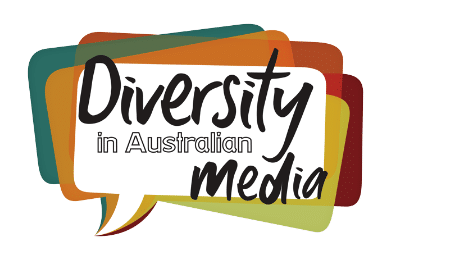
This article has been commissioned in partnership with Diversity in Australian Media. Learn more about Diversity in Australian Media by joining the Facebook group, or following them on Twitter.
This initiative is supported by Diversity Arts Australia, made possible through funding from Create NSW and the Australia Council for the Arts.
